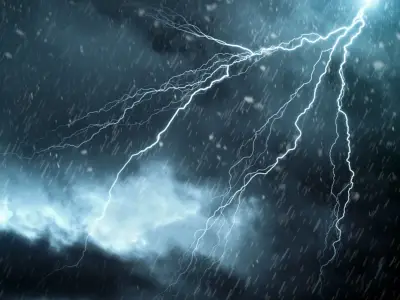Essential oils for candle making include citrus, lemon, lavender, tea tree, lemongrass, ylang-ylang and more. Human sensory receptors number in the hundreds, allowing us to enjoy a wide range of scents. This is why aromatherapy can make such a difference to someone’s wellbeing, and also why essential oils for candle making are so popular!
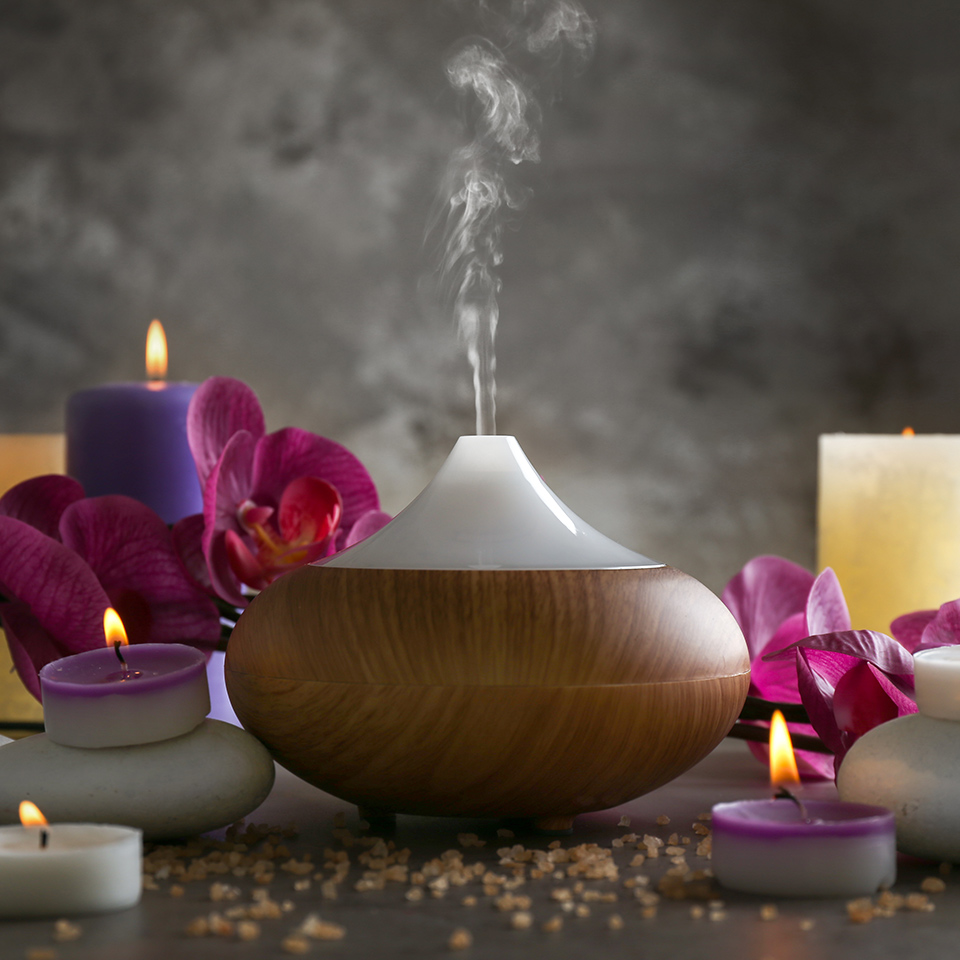
Essential oils can provide comfort, help you to create a calming and relaxed atmosphere, or simply freshen up your home. There’s a lot more to them than just a nice smell, so we wanted to dig into the details.
What Are Essential Oils?
Essential oils (not to be confused with fragrance oils) are essentially highly-concentrated plant extracts. They’re distilled (or otherwise extracted) from plant leaves, flowers, stems, roots, and bark. They get the name "essential" because they represent the "essence" of a plant's unique fragrance and properties. As such, each essential oil will have a different scent composition, and offer diverse benefits when used for aromatherapy, perfume, natural remedies, skincare, and cleaning products. They can be used topically, diffused in the air, or even ingested (if you have the guidance of a qualified healthcare practitioner!). In candle making, their scents can deliver short-term relief from conditions like stress, anxiety or insomnia.
What’s the Difference Between Fragrance Oils and Essential Oils?
Fragrance oils tend to be manufactured in a lab using synthetic chemicals. Essential oils are made using pure plant extracts, and therefore rely entirely on natural substances.
10 Essential Oils for Candle Making
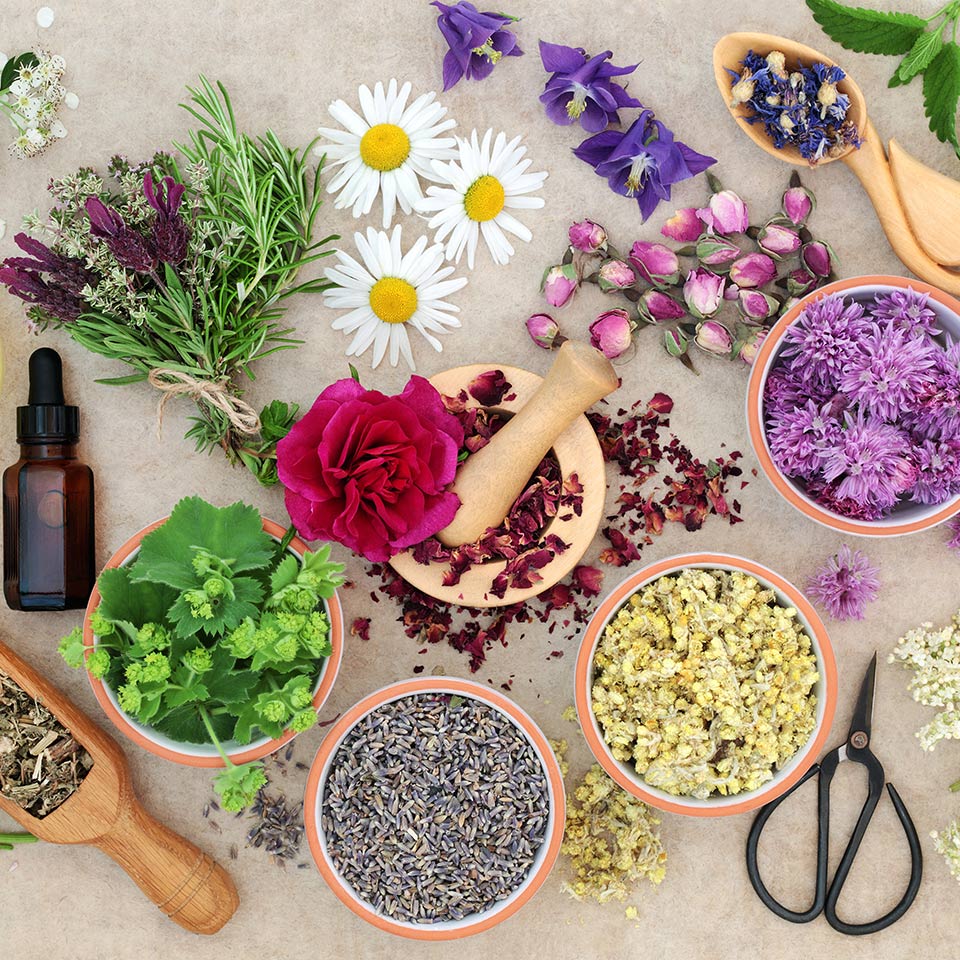
To use essential oils in candle making, it’s advisable to add an oil to the melted wax along with a suitable carrier oil or fragrance oil. This will help to disperse your chosen scent evenly throughout the candle in question. The exact amount of oil you use can vary greatly, and is largely dependent on personal preference and the size of the candle you’re making. One constant to keep in mind is that you should only ever use high-quality, pure essential oils! If you settle for anything less, you’ll find that the aroma won’t last as long as the candle burns.
Here are some of our favourite candle essential oils:
Lavender
Scent: Soothing and calming.
Promotes: Relaxation and stress relief.
Lavender essential oil is often added to aromatherapy candles, or to create a generally calm atmosphere within a room (especially when you’re trying to get to sleep). Because it has a pleasant and refreshing scent, it’s also useful for masking any unwanted odours.
Peppermint
Scent: Refreshing and invigorating.
Promotes: Focus and concentration.
Peppermint essential oil is often added to candles that are used within home offices, study areas, or somewhere that’s favoured for a morning routine. That boost to your focus and wellness can work wonders! It’s also good for easing headaches and relieving muscle tension.
Eucalyptus
Scent: Fresh and clean.
Promotes: Respiratory health and clear breathing.
Eucalyptus essential oil is a fantastic choice for candles that are designed to be burned during the winter (when colds and flus abound) or for people with allergies or asthma. Eucalyptus oil is also famous for its antiseptic and antibacterial properties.
Lemon
Scent: Bright and uplifting.
Promotes: Energy and positivity.
Lemon essential oil offers one of the most popular citrus fragrances. It provides a real boost to your mood, which makes it a great scent to wake up to! Similar to peppermint, it also helps to improve your focus and concentration.
Lemongrass
Scent: Fresh and light.
Promotes: Relaxation and focus.
Lemongrass essential oil has a powerful citrus scent, as well as antifungal, anti-inflammatory and antioxidant properties. It’s been used throughout history to treat stress, migraines, nausea, ulcers, and more.
Sweet Orange
Scent: Sweet and fruity.
Promotes: Happiness and joy.
Sweet Orange essential oil is a favourite for candles that adorn social gatherings, as its scent helps to lift your mood even more. It’s also great for creating a relaxing atmosphere, as it can help to reduce levels of stress and anxiety.
Frankincense
Scent: Warm and resinous.
Promotes: Relaxation and mediation.
Frankincense essential oil has an earthy, woody fragrance that calms and relaxes the mind: perfect for complementing meditation or a peaceful atmosphere. This oil is also known for its potential anti-inflammatory and immune-boosting properties, making it great for self-care.
Cedarwood
Scent: Woody and grounding.
Promotes: Calm and stability.
Cedarwood essential oil helps you to maintain a cosy and inviting atmosphere. Like frankincense, it’s also said to have anti-inflammatory and antiseptic properties, potentially supporting the health of your skin and improving respiratory function.
Tea Tree
Scent: Fresh and medicinal.
Promotes: Health and clarity.
Tea Tree essential oil has a purifying effect on the air, and also boasts potential antibacterial and antifungal properties. This makes it a favourite choice for candles that are situated in the kitchen or bathroom. It’s another good choice for respiratory health as well.
Ylang Ylang
Scent: Flowery and rich.
Promotes: Self-esteem and calm.
Ylang ylang essential oil is highly versatile as a result of its antioxidant properties. As well as reducing depression and boosting your mood, it’s thought to lower blood pressure, slow your heart rate, and even fight off the signs of premature ageing.
One final thing to note is that all essential oils offer different levels of strength and longevity when they’re used to make candles. It's therefore a good idea to experiment with various oils and combinations to make sure you find the perfect scent for your candle-making project. Many of these oils also have very strong scents, so we advise that you test each scent in a small amount before you get carried away and add something to a larger batch of wax!
Candle Making Tools
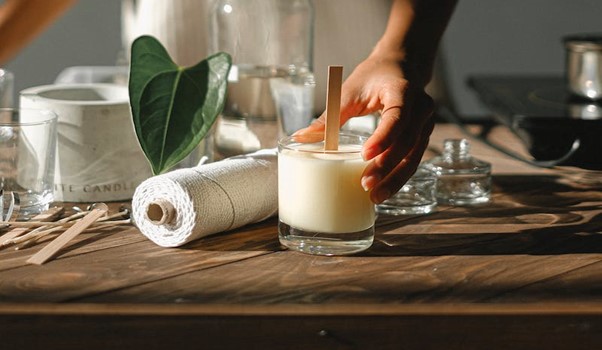
Inspired to try candle making for yourself? We have a guide to making scented candles at Christmas that’s great for candle making around the year as well. A good candle maker is likely to need the following basic* tools:
- Double boiler/melting pot/water bath: to melt the wax.
- Thermometer: to monitor the temperature of the wax.
- Candle wicks: a candle needs a way to burn!
- Centring tool: to centre the wick in an unset candle.
- Measuring cup: to measure the amount of wax.
- Fragrance/essential oils: to add your favourite scent to a candle.
- Colour dye chips/liquid colourant: to add your favourite colour to a candle.
- Stirring implement: to mix the oil, colour dye and wax together.
- Pouring pitcher: to pour melted wax into the candle container.
- Candle container: to hold the melted wax and wick as your candle sets.
- Heat-resistant surface: to protect your surfaces from spilled wax.
- Scissors: to trim the wick after the candle has set.
*Depending on the type of candle you’re making, more specific tools may be required.
10 Tips for Candle Making
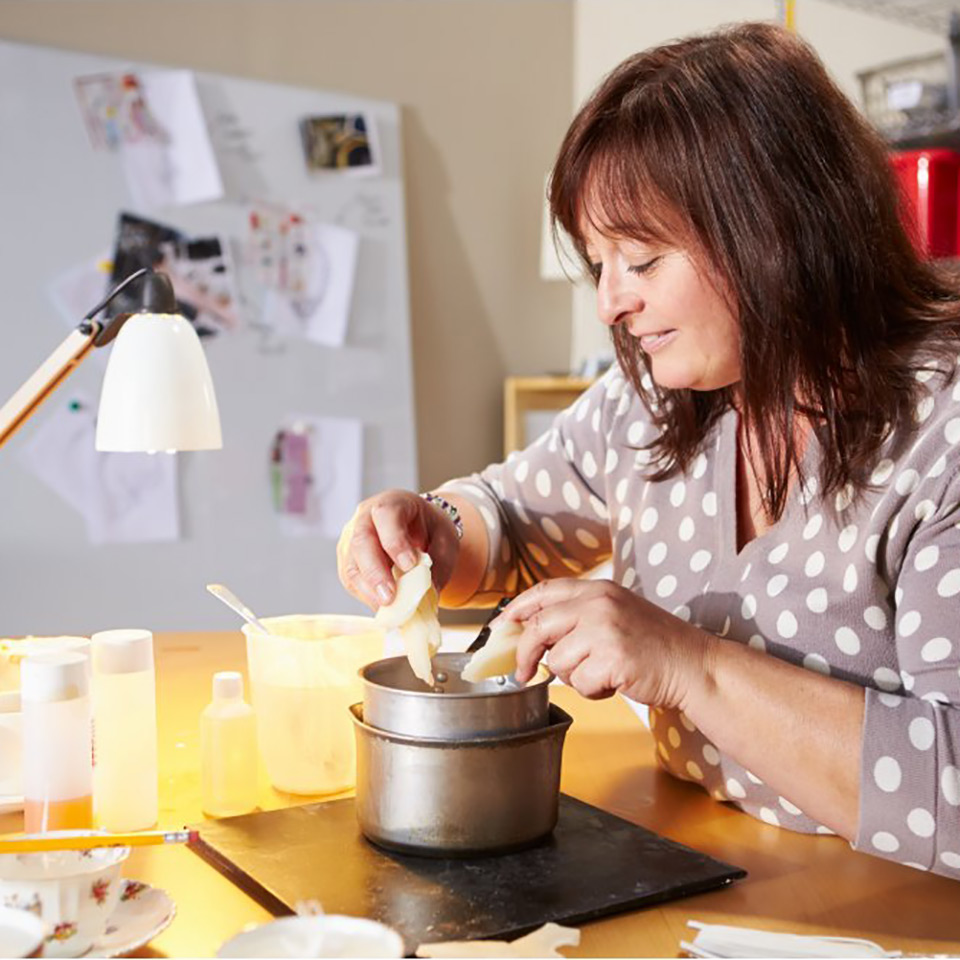
- Don’t rush the cooling process: leave any candle you’ve made for up to 48 hours before you light it.
- Choose your wax (soy, beeswax, paraffin, etc) carefully. All have different melting points.
- Use high quality wicks, and check they’re suitable for your chosen wax.
- Never melt wax directly onto a surface, as it may self ignite!
- Always work in a well-ventilated area.
- Clean up wax spillages immediately.
- Collect any candle scraps. They could be your raw materials for future projects!
- Keep your decorative elements as far from a naked candle flame as possible.
- Never leave a lit candle unattended.
- Experiment! Candle making can be hugely creative.
Keep in mind that candle making is a varied craft, so there may be other specific considerations depending on what type of candle you're making.




